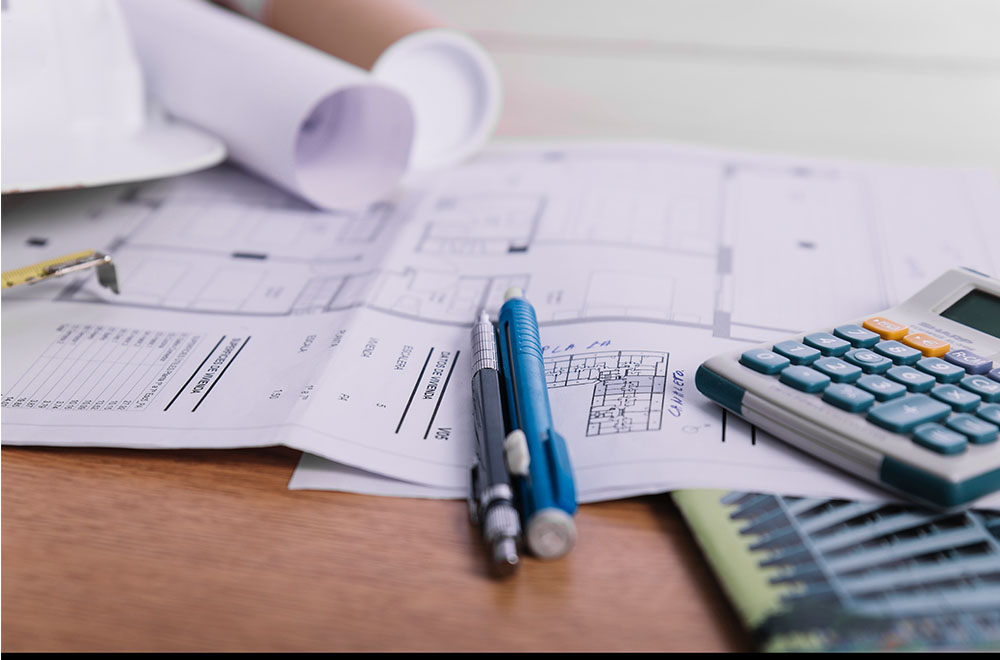Imagine you’re building a house. You need to figure out how much wood, nails, and other materials you’ll need. You must also know how many friends to ask for help and how long it will take. In construction, this planning process is called a “quantity takeoff.” It helps to know exactly what they need and how much it will cost.
Knowing quantity takeoff is like making a shopping list and scheduling for a big project, ensuring everything runs smoothly.
Table of Contents
ToggleWhat is Quantity Takeoff?
Quantity takeoff refers to estimating quantities of materials, labor, and equipment needed to complete a construction project. The architects, engineers, or drafters look at the drawings and plans, estimate the physical quantities, and record these details carefully.
There are two types of construction takeoffs, which we are not going to discuss here; you can read about them in material takeoffs.
The Purpose of Quantity Takeoff in Construction Projects
Quantity takeoff plans and manages construction projects. It involves estimating materials, labor, and equipment needed to complete a project. This count confirms builders have everything they need, stay within budget, and meet deadlines. It helps to avoid mistakes and surprises during construction, making the process smoother and more efficient.
Cost Estimation
Cost control is a vital part of quantity takeoffs. You must know how much you will spend on materials, labor, and equipment. Accurate cost estimation creates a realistic budget essential for project success.
If the estimate is too low, the project might run out of money. If it’s too high, it could scare away clients or investors. Estimating experts can avoid these problems carefully and keep the project on track financially.
Resource Management
Resource allocation involves organizing and using materials, labor, and equipment efficiently. With quantity takeoff, estimators know exactly what they require and when. This takeoffs prevents over-ordering or under-ordering materials, reducing waste and delays.
Effective resource management guarantees workers have the tools and supplies at the right time, helping the project run smoothly. It also decreases costs by minimizing waste and optimizing resource use.
Project Planning
Project planning is another essential part of takeoff quantities. It involves creating a detailed schedule for the construction process. Experienced constructor must know the order of tasks and how long each task will take. By planning, they can coordinate the project’s different parts and avoid conflicts or delays.
A well-planned project is more likely to finish on time and within budget. It provides the information required to create an effective project plan, checking all aspects of the construction process are correctly considered and organized.
Components of Quantity Takeoff
Quantity takeoff is crucial in construction planning. It includes calculating and listing all the materials, labor, and equipment needed for a project.
Materials
A primary component of quantity takeoff is measuring and listing all the materials necessary for a project. This includes examining drawings and plans to determine the quantities of materials like concrete, steel, bricks, and lumber.
Exact measurement helps avoid over-ordering or under-ordering, so that contractors gather all the materials without wasting resources.
Labor
Labor estimation calculates the number of workers needed and the skills they must have. For example, building a house requires carpenters, electricians, plumbers, and painters. Estimating labor aids plan the workforce, so enough qualified workers are at each project stage. This prevents delays and keeps the project on track.
Equipment
Construction projects require various equipment, such as cranes, bulldozers, and concrete mixers. Identifying the necessary equipment shows that all tools are available when ought, preventing pauses. It also assists in budget for renting or purchasing supplies, ensuring the efficient and timely completion of construction projects.

How to Do Quantity Takeoffs
The quantity takeoff process goes through clear and efficient planning. Each step helps to know the project’s requirements and prepares them for successful execution.
1. Reviewing Blueprints and Project Plans
The project planning and analyzing design aids in knowing the scope and details of the project. They need to know what the finished project will look like and what materials and labor are required.
Accurate data input is crucial. Estimating proficients must check that the measurements and details they use are precise. Mistakes at this stage can lead to errors in the entire takeoff process, causing waits and increasing costs. It assists in avoiding these issues and sets a solid foundation for the rest of the project.
2. Measuring Quantities
In this step, builders count the materials needed based on the dimensions in the project plans. They carefully read the specifications to determine the elements’ length, width, height, and volume. Precise calculations are beneficial for accounting for materials for accuracy.
Constructors should avoid relying on scaled drawings for measurements unless necessary. Scaled drawings can be inaccurate, leading to errors in quantity estimates. It is better to use the actual dimensions provided in the plans to ensure precision.
3. Recording Quantities
After measuring the quantities, quantity surveyors need to record them accurately. They detail where each item is located in the structure, using references from the charts. It is helpful to divide the project into smaller, manageable parts or assemblies for large projects. This makes the takeoff process easier and more organized. Each part is measured and recorded separately, which helps in managing the project more efficiently.
4. Scaling and Measuring the Project
Professionals use tools like tape measures, laser measurements, and digital devices to get precise counts. They verify that each dimension is measured correctly to avoid errors in the quantity takeoff.
Digital takeoff software helps automate measurements and calculations, making the process faster and error-free. These tools handle complex calculations and provide detailed reports essential for faultless takeoff.
5. Calculating Material Quantities
The final step involves calculating the quantities of materials needed for the project. Takeoff specialists use various methods depending on the type of material. For example, they measure lumber in linear feet, concrete in cubic yards, and tiles in square feet.
Common Challenges and Solutions
The quantity takeoff process is crucial but can be challenging. You face several common issues, but there are solutions to overcome them.
Input Data Precision
Incorrect measurements or details can cause significant problems, like ordering the wrong amounts of materials, leading to wasted money or holds. You must double-check everything before starting the takeoff process. Using digital tools and software can provide valid measurements and reduce human error.
Complexity of Large Projects
Large projects are complex, with many parts to manage, making the quantity takeoff process more difficult. With large amounts of data, it’s easy to overlook details or make mistakes. You should break the project into smaller, manageable parts. By focusing on one section at a time, they can confirm that each part is measured and recorded correctly, lessening the risk of errors.
Human Error in Manual Takeoffs
Mistakes can occur when measuring or recording data by hand, leading to inaccurate estimates. Digital tools and software automatically hold many tasks in takeoff quantities, speeding up the method. However, estimators must still review the data to examine everything is correct. Regular training and practice can also improve accuracy and reduce mistakes.
Conclusion
Quantity takeoffs are vital in construction planning. They involve calculating the materials, labor, and equipment necessary for a project. This method aids estimators in getting everything in one place to complete the job efficiently and within budget.
These also help prevent cost overruns, manage resources, and keep projects on schedule. Projects could face delays, wasted materials, and increased costs without precise takeoffs.






